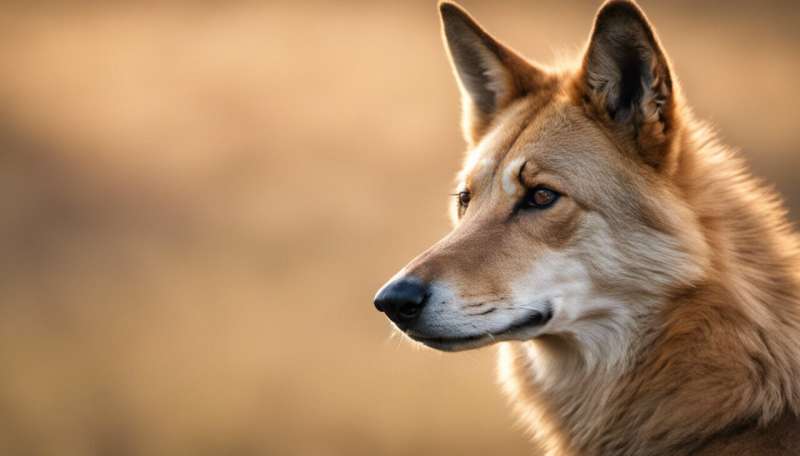Credit: AI-generated image (disclaimer)
A new University of Sydney study has revealed differences in skull shapes among dingoes from different Australian regions, lending support for the idea of two dingo subgroups, rather than three.
Department of Archaeology Ph.D. candidate Loukas Koungoulos found that dingoes from northwestern Australia, defined as encompassing mostly Western Australia, South Australia, the Northern Territory and inland Queensland, all have very similarly shaped skulls—long, thin, and relatively flat.
This contrasts with dingoes from the southeastern region—defined as southern coastal Queensland, New South Wales, and Victoria—which tend to have broader skulls with more prominent faces. Compared to their relatives from northwestern parts of Australia, their skulls are more similar to those of domestic dogs and wild New Guinea singing dogs.
Mr Koungoulos said these differences could be adaptive, due to crossbreeding with domestic dogs, or could indicate different ancestry.
"An older theory suggests three dingo variants—tropical, desert and alpine.
"My research, however, which shows little difference between tropical and desert dingoes, but great difference between them and those from alpine upland areas, supports recent genetic work that suggests there are just two dingo subgroups."
How to map a dingo skull
Using 3-D geometric morphometrics—the analysis of form using coordinates rather than straight lines—Mr Koungoulos mapped adult dingo skulls that he obtained from museum collections across Australia, including at the University of Sydney.
"This method can detect and describe aspects of shape that traditional measurements often cannot," he explained.
Most of his samples were from animals collected from 1940 to 1999 in pest control and scientific research contexts, and only those with known locations—302 in total—were used.
Where to next?
Published in journal Zoomorphology, the research forms a starting point from which Mr Koungoulos plans to analyse whether the skull differences are indeed caused by ancestral divergence, not crossbreeding with domesticated dogs. This will involve studying collections of genetically verified pure dingo skulls to eliminate the possible influence of dogs.
More information: Koungoulos, L. Old dogs, new tricks: 3-D geometric analysis of cranial morphology supports ancient population substructure in the Australian dingo. Zoomorphology (2020). doi.org/10.1007/s00435-019-00475-z
Kylie M. Cairns et al. New insights on the history of canids in Oceania based on mitochondrial and nuclear data, Genetica (2016). DOI: 10.1007/s10709-016-9924-z
Provided by University of Sydney






















